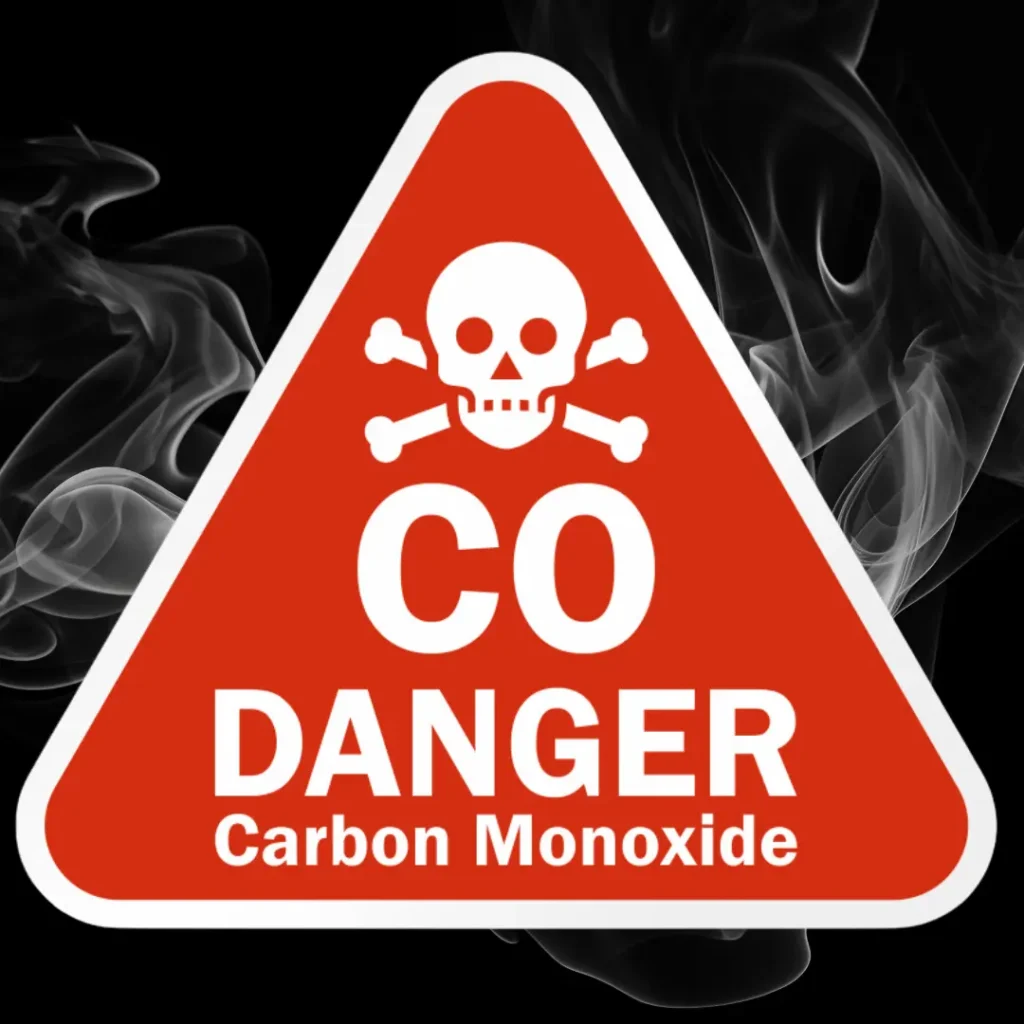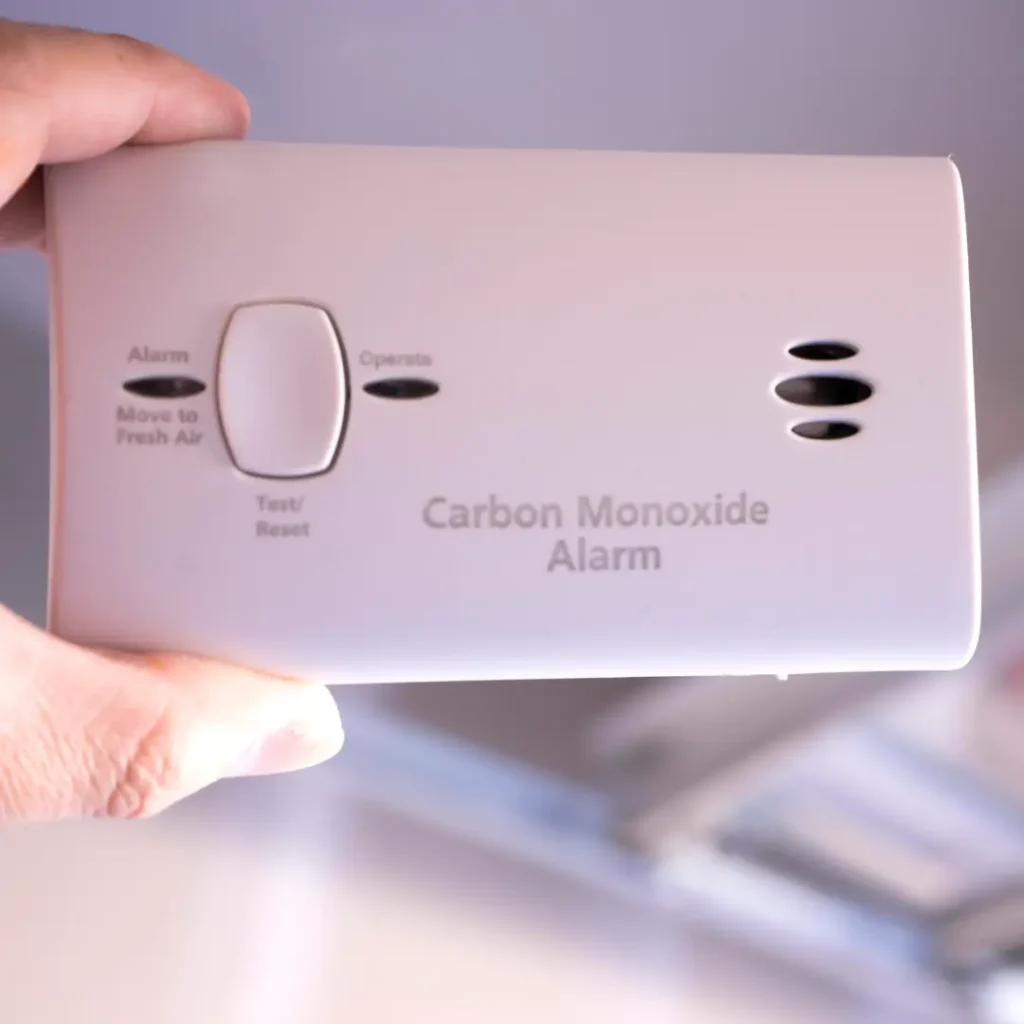Winter in Canada can be a brutal time, and your furnace is important to keep your house warm and comfortable. When was the last...
How Can I Tell If My Furnace Is Leaking Carbon Monoxide?
Your furnace and carbon monoxide are not topics many people think about daily, yet they hold significant implications for your safety and well-being. During the winter months, when the furnace is running almost nonstop, the dangers associated with furnace carbon monoxide leaks increase exponentially. Unlike other household issues, a carbon monoxide leak isn’t something you can see, touch, or smell. This colorless, odorless gas can silently accumulate in your home, potentially leading to severe health risks or even fatalities.
Knowing the dangers, causes, and symptoms associated with gas leaks in your furnace can aid you in taking preventive steps to ensure your family’s safety. You may have concerns like, “Does carbon monoxide have a smell?” Or “Can propane produce carbon monoxide?” This is a legitimate concern and is especially relevant if you’re depending upon heating systems based on combustion. Knowing the indicators of a carbon monoxide leak is vital if you’re experiencing odd aromas, smoke buildup, or other health problems that aren’t explained symptoms.
Here, we will discuss how carbon monoxide leaks can occur, how to identify the signs, and how to avoid them.
What is Carbon Monoxide, and Why Is It Dangerous?
Carbon monoxide can be a product of burning fossil fuels, such as propane, natural gas, oil and wood. The water heaters, furnaces, or fireplaces that use these fuels may generate carbon monoxide. In most cases, gas is safe to vent out of the home. However, if there is a problem with the appliance or ventilation system, carbon monoxide can build up inside.
Carbon monoxide’s threat is its invisibility and capacity to interfere with the flow of oxygen to the body. If inhaled, carbon monoxide bonds to haemoglobin found in the bloodstream, which reduces the ability of your blood to transport oxygen to your vital organs. Signs of carbon monoxide poisoning could vary from minor (headache or dizziness) to extreme (confusion or unconsciousness and possibly death). Inadequate exposure may also trigger long-term health issues like memory issues and heart-related complications.
This risk is incredibly high in winter, as furnaces are extensively used to warm houses. Being aware of carbon monoxide’s dangers is the first step towards protecting your home from possible leaks.
Can You Smell Carbon Monoxide?
The most frequently asked question is: Does carbon monoxide stink? The answer is not. Carbon monoxide does not have any odour. The combustion process within your furnace could generate other byproducts with distinctive scents like a burning or chemical smell. If you experience unusual odours when your furnace is running could be a sign that something is wrong.
Many homeowners wonder: does carbon monoxide have a smell as well as a carbon monoxide scent? While the gas can’t be detected by scent, the device that emits carbon monoxide could be a sign of an issue like a peculiar or unpleasant scent. If you can detect the smells mentioned above, it is imperative to shut off your heating unit and call a professional immediately.
Signs Your Furnace Is Leaking Carbon Monoxide

The signs of a furnace CO leak can help save lives. There are a few signs to look out for:
1. Symptoms of Carbon Monoxide Poisoning
The first sign of a furnace carbon monoxide problem could be its effects on your health. Suppose you or your loved ones are experiencing persistent symptoms such as nausea, headaches, dizziness, or flu-like illnesses without any clear explanation. In that case, the possibility is that it’s an indication of CO poisoning. If several people in the family experience the same symptoms, it is advisable to suspect the possibility of a leakage of CO immediately.
2. Soot and Smoke Around the Furnace
Smoke or soot marks visible near your furnace are indicators of faulty combustion. A furnace that is functioning properly should be able to completely contain combustion. If you observe such residues, it’s an indication that carbon monoxide could be dissipating.
3. Yellow or Flickering Flame
The healthy flame of a furnace burns brilliant blue. If it appears to be dim or yellow, this could indicate insufficient combustion, which could lead to carbon monoxide. This should be a warning that your furnace requires immediate examination.
4. Furnace Odors
Does carbon monoxide smell? No, however, other byproducts that result from combustion incompletion could cause smells that can be detected. The furnace may emit dangerous gasses if you notice combustion, chemical or unpleasant odours.
Can Electric Heaters Emit Carbon Monoxide?
An issue frequently raised during more fabulous times concerns whether or not electric heating systems present similar risks to furnaces. Many homeowners ask if electric heaters give off carbon monoxide or if electric heaters emit carbon monoxide. The answer is none. Electric heaters don’t rely on combustion. Therefore, they don’t generate carbon monoxide. Consequently, they are a better choice for those worried about CO exposure.
But it’s crucial to ensure that every heating appliance, whether fuel- or electric-based, can be used properly and maintained properly. Incorrect use or damage to equipment may pose further risks, including fire dangers.
Can Propane Produce Carbon Monoxide?
Propane is the most common heating fuel used by many domestic heating units. Propane combustion may generate carbon monoxide when it isn’t properly done. This is typically the case when the furnace is not functioning properly, is not properly ventilated, or is not maintained properly.
Periodic inspections and maintenance of propane-powered systems are essential to reduce the risk. Adding a furnace smoke detector and a carbon monoxide detector near your propane heater could provide extra safety.
Preventing Carbon Monoxide Leaks from Your Furnace

The most effective way to deal with the furnace and carbon monoxide problem is through prevention. A regular maintenance schedule and some security measures could help keep your home secure. What you can take:
1. Install Carbon Monoxide Detectors
A furnace smoke detector designed to detect carbon monoxide can be your primary security measure. Install detectors in bedrooms or the common areas close to the fireplace. Examine the detectors regularly to make sure they’re working properly.
2. Schedule Annual Furnace Inspections
A professional inspection of your furnace annually can identify potential problems before they become dangerous. Technicians can look for leaks, wash critical parts, and ensure proper ventilation.
3. Replace Furnace Filters
Filters that are blocked can impede airflow, leading to incomplete combustion and increasing the chance of furnace CO leaks. Be sure to replace and check your furnace’s filters every three months or according to the recommendations of the furnace’s manufacturer.
4. Ensure Proper Ventilation
Damaged or blocked vents could hold in the home’s gases, creating an unsafe atmosphere. Make sure that your exhaust pipes and vents are free of debris and are properly connected.
What To Do If You Suspect a Leak
If you think that your furnace may be emitting carbon monoxide gas, you must act promptly:
- Shut off the stove as soon as you can.
- The windows and doors can be opened for ventilation in your house.
- Get everyone out of the home, as well as pets.
- Contact emergency services or an expert in heating to look over your furnace.
- You should not go back to the home until the problem is solved and the air is checked to ensure safety.
Final Thoughts
Knowing the dangers of furnaces, carbon monoxide leaks, and warning signs could save lives. Whether it’s the nebulous symptoms of CO poisoning or the unusual smells near your furnace, being vigilant is crucial. Routine maintenance, the installation of carbon monoxide detectors, and keeping informed on how combustion systems function help keep your family members safe.
Although electric heaters do not emit carbon monoxide, propane-fueled heaters can be risky if improperly maintained. If you’ve ever thought, does carbon monoxide have a smell? The answer is not always the case, but there are different indicators to be aware of. Be sure to take safety first and seek out experts when unsure about your heating systems.




